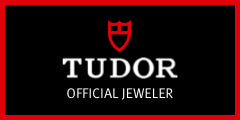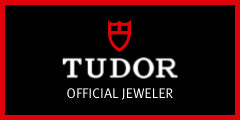Diamond Education
The four Cs of diamonds
● Cut ● Color ● Clarity ● Carat Weight
Diamond CUT
Cut refers to a diamond’s precise dimensions, proportions, and angles.
A proper cut gives a diamond its brilliance (reflection of light, shine, or “fire”).
Diamond cut additional information
Table: The flat face on the top of the diamond.
Girdle: The outer edge of the diamond that separates the top half of the diamond (the crown) from the bottom half (the pavilion).
Symmetry: Refers to the balance of the diamond. Diamonds that are cut evenly according to the geometeric patterns that define their shape have good symmetry.
Finish: Refers to the quality of exterior surfaces of the diamond. The fewer blemishes a diamond has, and the smoother the surfaces of the diamond are, the better the finish is.
Diamond COLOR
A diamond’s color is graded on a scale from D to Z.
A diamond with a color grading of D is colorless.
A diamond with a color grading of Z has a light yellow color.
Diamond color grading
| D | E | F | G | H | I | J | K | L | M | N | O | P | Q | R | S | T | U | V | W | X | Y | Z |
|---|---|---|---|---|---|---|---|---|---|---|---|---|---|---|---|---|---|---|---|---|---|---|
| Colorless | Near Colorless | Faint Yellow | Very Light Yellow | Light Yellow | ||||||||||||||||||
Diamond color additional information
Black, gray, and other similar dark-colored diamonds are referred to as "Black Diamonds" in the diamond industry. While black Diamonds are somewhat more common, red diamonds are the most rare.
Diamonds typically consist of pure Carbon. However, traces of other elements are occasionally found in diamonds. These foreign elements can cause diamonds to assume different colors. Below is a listing of diamond colors and their causes:
yellow - nitrogen
orange - nitrogen
blue - boron
green - irradiation
brown - uknown (possibly caused by structural anomalies)
red - unknown (possibly caused by structural anomalies)
pink - unknown (possibly caused by structural anomalies)
black - irradiation
Fancy color is a designation applied to stones with unusual colors. Fancy colors include darker yellows, browns, and grays, and very light to dark tones of blue, green, orange, pink, red and purple. Occasionally, black stones are cut as gems.
Photo luminescence (more commonly referred to as "fluorescence") refers to the diamond's appearance under ultra-violet (UV) light. (G.I.A. gemologists use a black-light to determine a diamond's fluorescence.) Many diamonds do not exhibit fluorescence when examined under UV light, but some do--ranging in intensity from faint to strong. Blue fluorescence is the most common, however yellow and white fluorescence also occur in some stones. Blue fluorescence is caused by traces of the element boron found in the diamond. The jury is out among gemologists as to wheter fluorescence adds to or detracts from a diamond's value. However, the Gemological Institute of America (G.I.A.) has recently published information indicating that blue fluorescence is usually considered a positive feature of a diamond.
Diamond CLARITY
Clarity describes the purity of a diamond.
A diamond may have internal flaws (called inclusions) and external flaws (called blemishes).
Internal and external flaws can detract from a diamond's brilliance, appearance, clarity, and value.
Diamond clarity grading
| FL | IF | VVS1 | VVS2 | VS1 | VS2 | SI1 | SI2 | I1 | I2 | I3 |
|---|---|---|---|---|---|---|---|---|---|---|
| Flawless | Internally Flawless | Very Very Slightly Included | Very Slightly Included | Slightly Included | Included | |||||
| Flawless | A diamond that is completely free from inclusions and blemishes at 10X magnifcation. |
|---|---|
| Internally Flawless | A diamond that is completely transparent and free from inclusions under 10X magnification. |
| Very, Very Slightly Included | A diamond that contains very, very small inclusions, very difficult to recognize under 10X magnification. |
| Very Slightly Included | A diamond that contains very small inclusions, difficult to recognize under 10X magnification. |
| Slightly Included | A diamond that contains small inclusions, easily discernable under 10X magnification, not visible through the crown with the naked eye. |
| Imperfect | A dimaond that has inclusions that range from those that can be seen easily under 10X magnification to those large enough to be seen with the naked eye. |
Diamond clarity additional information
Internal flaws are caused by the by the presence of other elements or minerals during the diamond's crystalization.
External flaws may be caused by errors made when the stone was cut and/or polished.
Diamonds are graded for clarity by G.I.A. certified gemologists using ten times (10X) magnification.
A diamond's clarity grade is determined by the number and size of inclusions found during grading.
Inclusions include feathers, clouds, and crystals.
Feathers appear as lines or internal cracks in the diamond.
Clouds are areas of the diamond that are not transparent. Crystals appear as "bubbles" in the diamond.
Diamond CARAT WEIGHT
The carat is the standard unit of measure used when weighing precious gemstones. Five carats equals one gram. So, one carat is equal to 1/5 of a gram (or .2 grams). There are 100 "points" to a carat. So, a carat weight of .50 is the same as a carat weight of 1/2 carat. A carat weight of .75 means 3/4 of a carat, and so on.
At Meierotto Jewelers, loose diamonds are our specialty. We take great pride in the knowledge and expertise of our staff. It's one of the reasons so many people trust us to treat them fairly and to provide high quality diamonds.
Many people in the process of buying a diamond have heard about the Four C's. This refers to the four primary characteristics of diamonds that give them uniqueness and value: cut, color, clarity, carat weight.
Lab Grown Diamonds
Meierotto Jewelers has one of the largest selections of lab grown diamonds in the Kansas City area. Lab grown diamonds are essentially chemically and optically the same as natural diamonds. Each lab grown diamond is graded under the same criteria as an earth mined diamond. We have a wide variety of qualities in stock at all times. Visit us in-store today to learn more. We look forward to the opportunity to help you find the right diamond.



